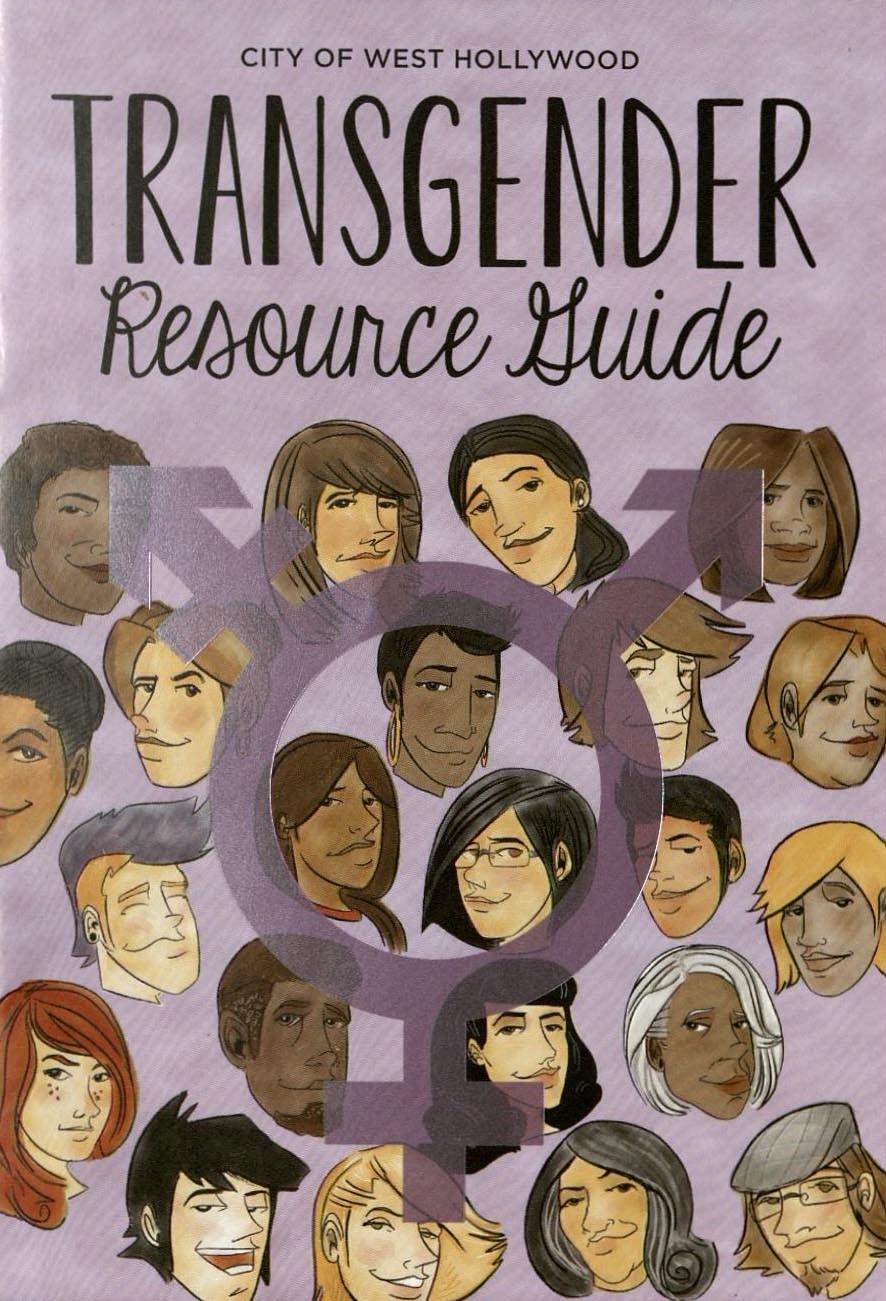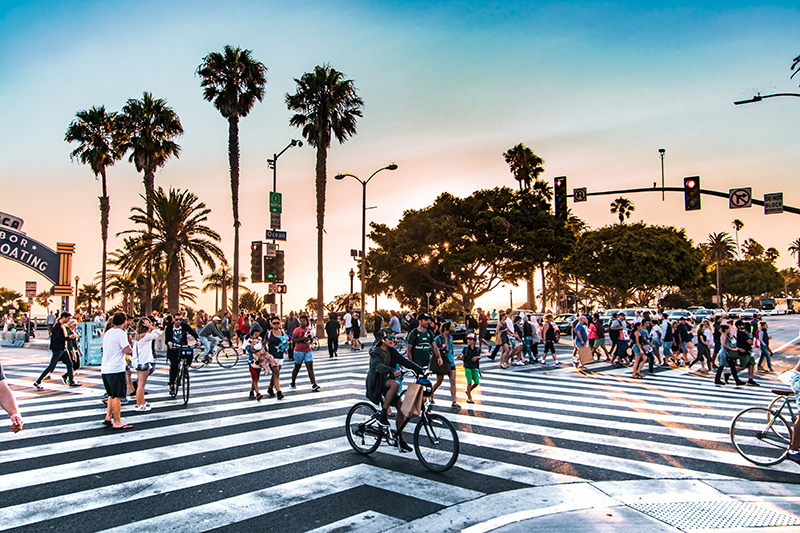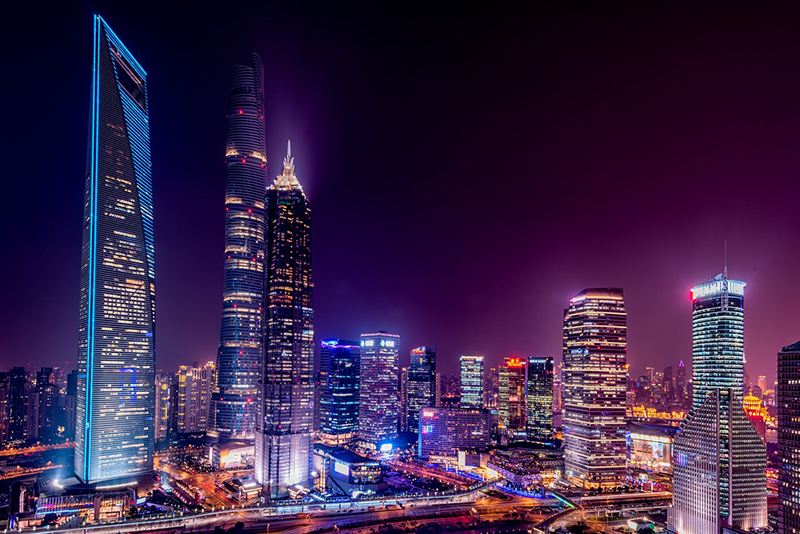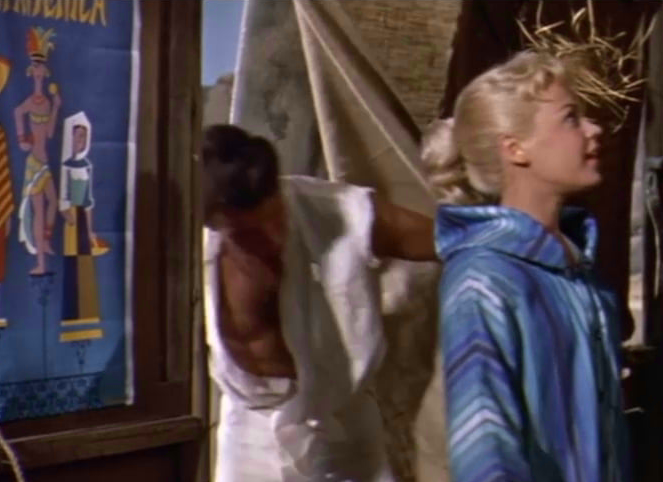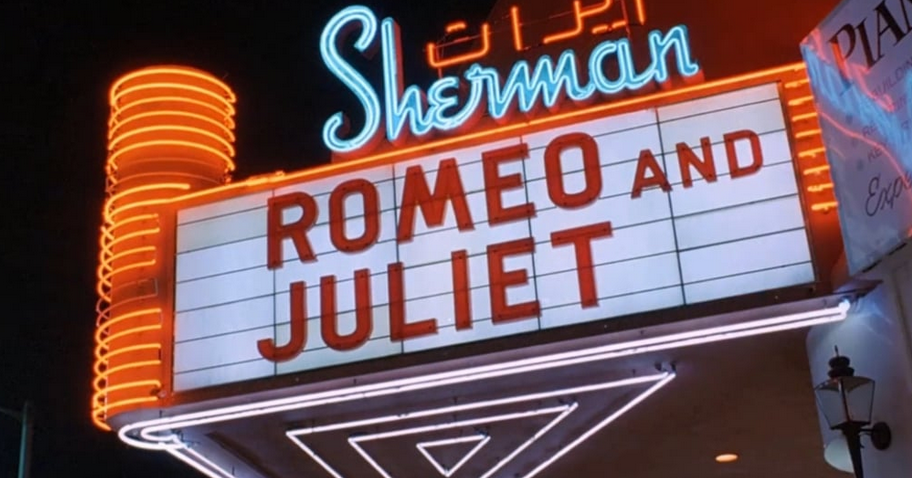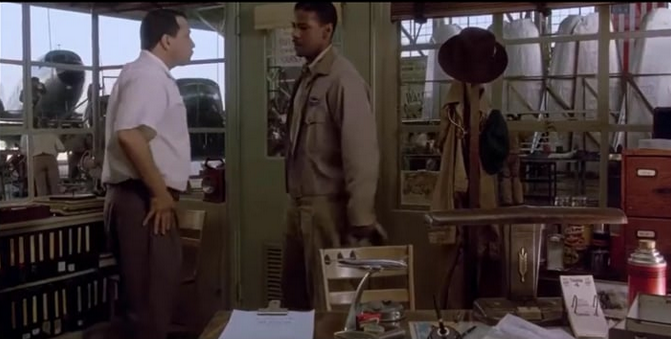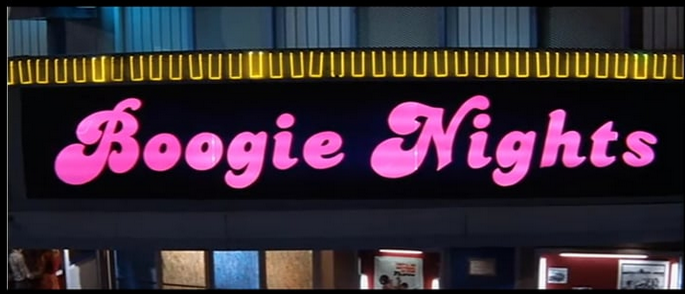LA Aesthetic
Los Angeles is incredibly diverse and geographically expansive, but stereotypes about the region and particular areas within it have come to shape impressions of the city in our collective consciousness. Some places in the city are seen as safe spaces for communities that face discrimination and ostracization, while others set trends in different time periods. Los Angeles can be a space for pushing dominant cultural boundaries, and a place natural disasters sculpt into new physical and geographic configurations. This interface of landscape, culture, and nature shapes our sense of Los Angeles's aesthetic.
Gidget (1959)
At first glance, Gidget's plot is a clean-cut Hollywood portrayal of suburban American life in the 1950s. A teenage girl meets a teenage boy at the beach and takes up his surfing hobby to fit in and get his attention. Director William Asher described the beach party genre as being about "kids having a good time and not getting into trouble," (emphasis added) but viewed more closely, Gidget includes statements of nonconformity and rebellion, especially Beat culture and an alternative youth culture marked by bikinis, surfing, and shacks on the beach. The surfers’ leader in the film is a grown man called "The Big Kahuna." In the guise of a native Hawaiian leader, he is a traveling minstrel sharing tales of exotic places and life without traditional American responsibilities, luring Gidget’s love interest away from his parents' and mainstream America's expectations.
Hermosa Beach Surfers
Surfers in the water at Hermosa Beach in the early 1950s indicate surfing's growing popularity in California during the post-war period. During this time, surf culture in California was still considered "underground." The release of the movie Gidget in 1959, followed by the Beach Party films starring Frankie Avalon and Annette Funicello, helped boost the mainstreaming of surf culture. These movies also served as America’s introduction to surfing, surfers, and beach culture more broadly. In the popular ethos, Los Angeles is not Los Angeles without them.
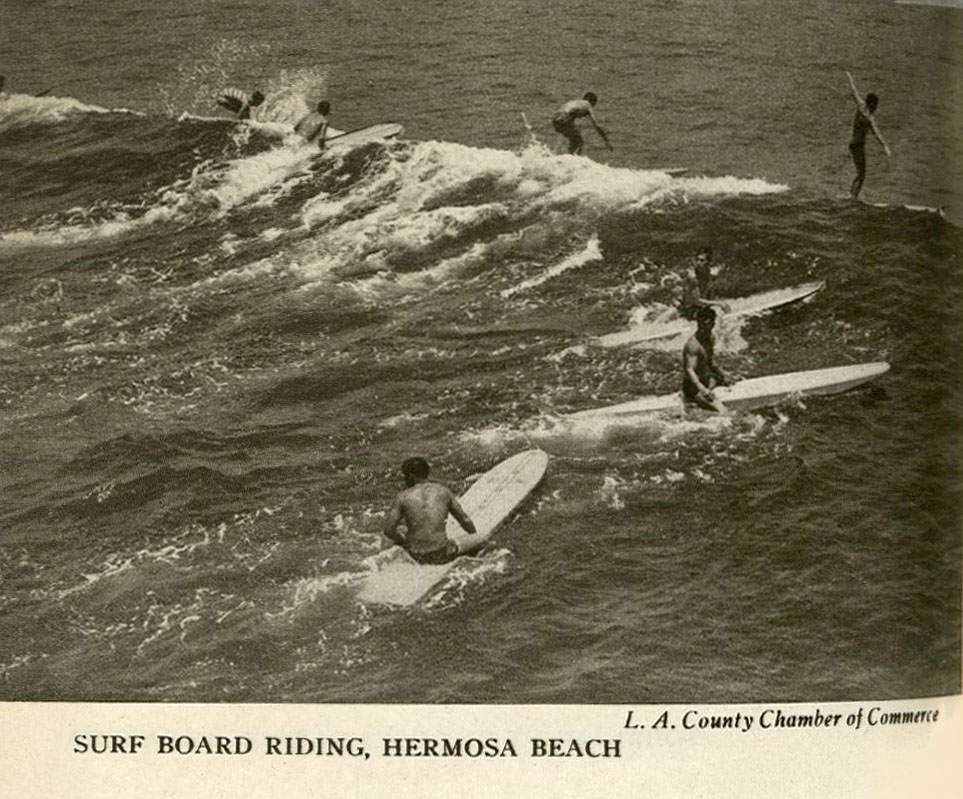
Bikinis
Two versions of the modern bikini were introduced to the public in 1946, one by designer Jacques Heim, and the other by Louis Réard. The Heim two-piece, which covered the navel, gained popularity on American beaches. The Réard "string bikini," popular in parts of Europe and banned in others, was deemed "indecent" by many Americans. Cities across the United States grappled with how bikinis fit into existing public decency laws as the risqué new bathing suit was a radical departure from previous modest beach clothing.
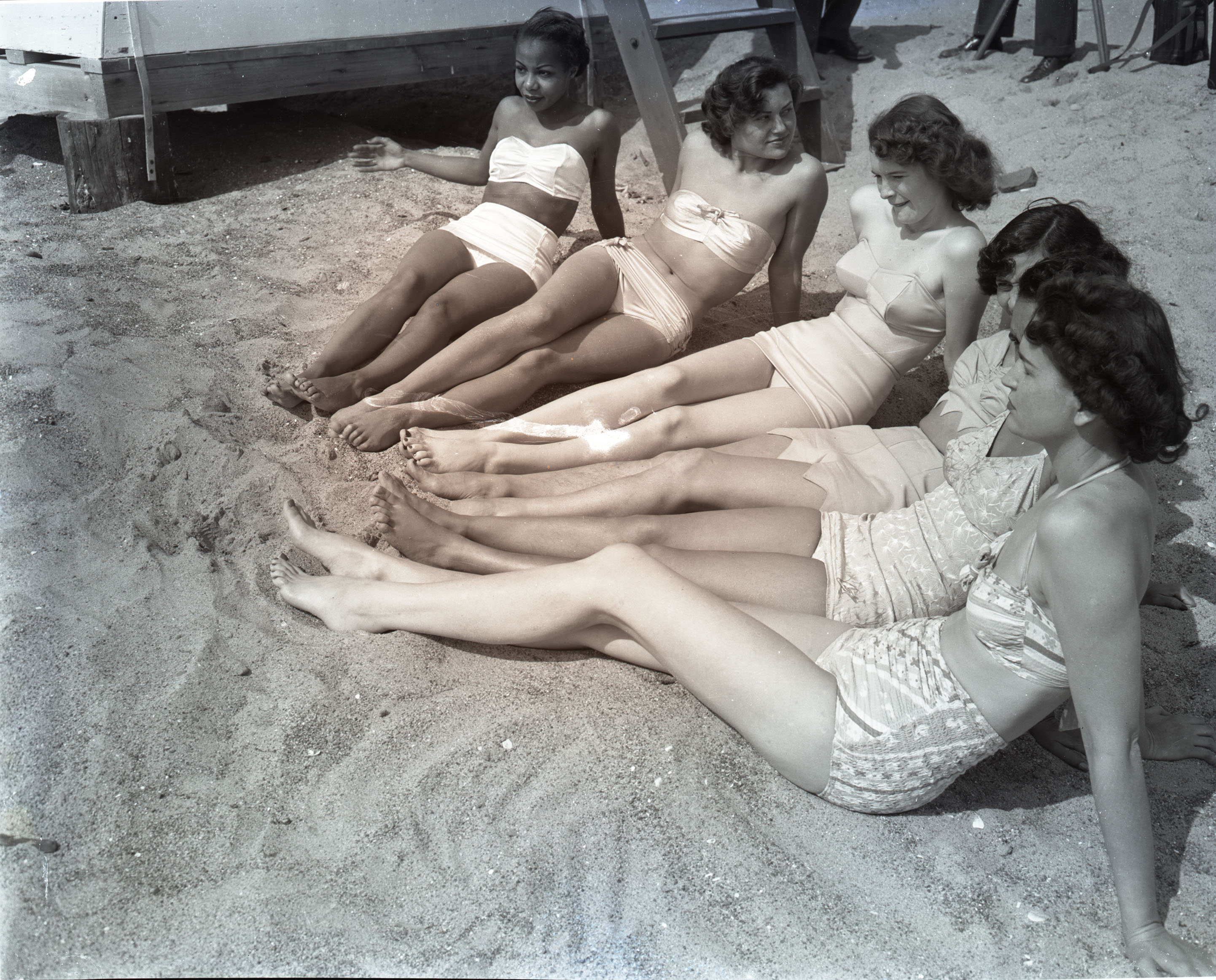
Beach and Car Culture
In an effort to entice potential customers, Chrysler provided a link between beach culture, youth culture, and car culture in Southern California, with an implied link to Hollywood in its advertisements. This photo, taken in 1963, attempts to repeat past success at commercialization of beach and surf culture after Gidget (1959) and the Beach Boys hit "Surfin" (1961). By featuring a new car on the beach, the ad correlates the American good life with the Los Angeles beach scene in a vision of achievable luxury.
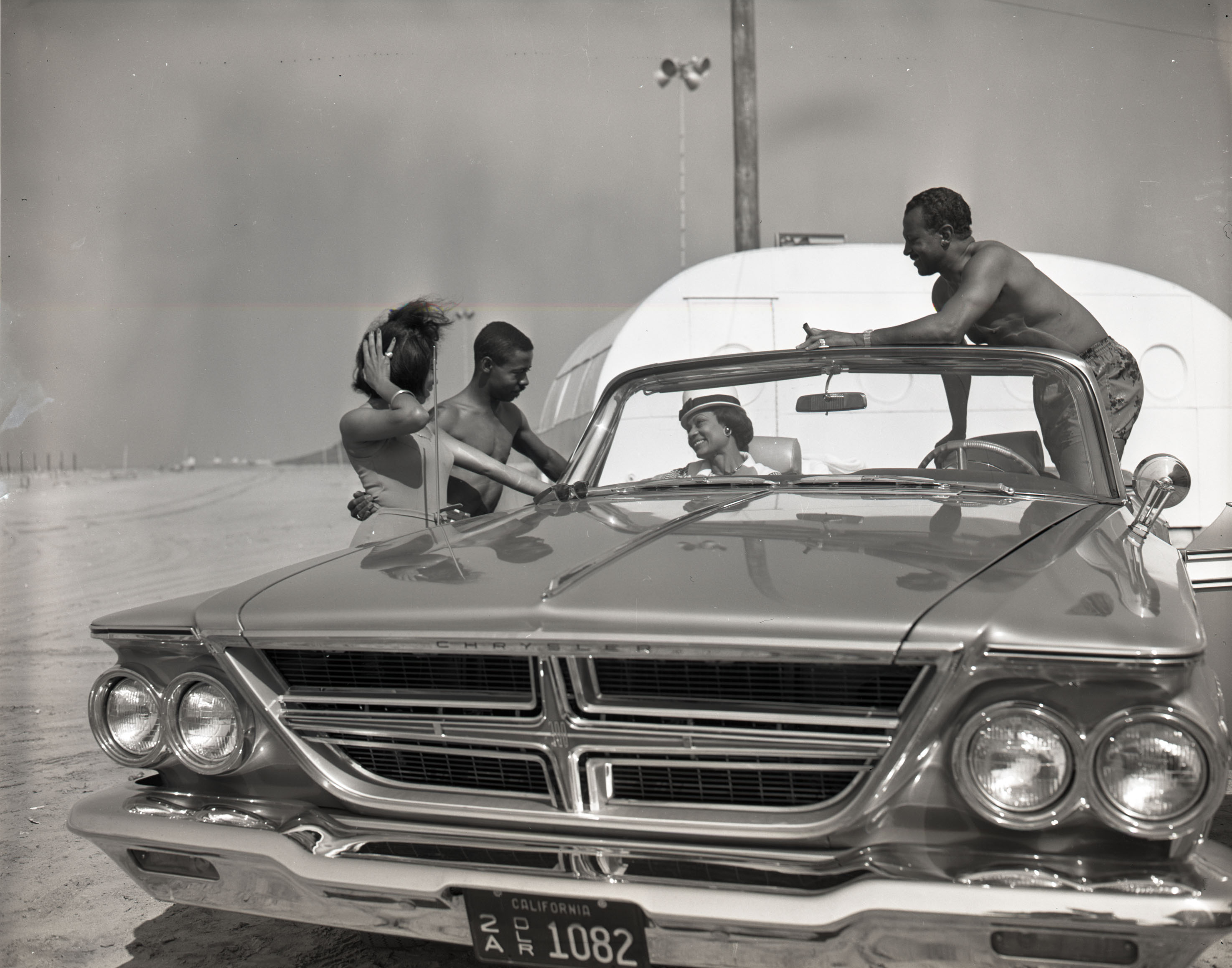
Earthquake (1974)
Earthquake is a disaster film that follows a group of Angelenos from different backgrounds as they struggle to survive following a destructive earthquake and its aftershocks. Earthquake turns Los Angeles into a disaster site as famous Hollywood buildings, a Spanish-colonial bell tower, and a Craftsman bungalow—all iconic symbols of the city—crumble in the quake's wake. California is known for its earthquakes, with the threat of the "Big One" looming. In real Los Angeles, the 1971 San Fernando earthquake had a considerable impact on the San Fernando Valley, levelling homes and impacting water sources just a few years before Earthquake was released.
Seismic Safety Plan
A few years after the 1971 San Fernando quake, the Los Angeles Department of City Planning created the Seismic Safety Plan to conform to an ordinance California mandated requiring the "identification and appraisal of... seismic hazards" and seismic activity more generally. The large size and population of Los Angeles combined with the interconnected nature of its infrastructure elevates a natural disaster's potential level of impact. In Earthquake, character Stewart Graff supported building projects that would protect infrastructure in case of any seismic activity. The film's Seismology Institute worked to improve disaster preparedness, including the possibility of an earthquake predictive system.
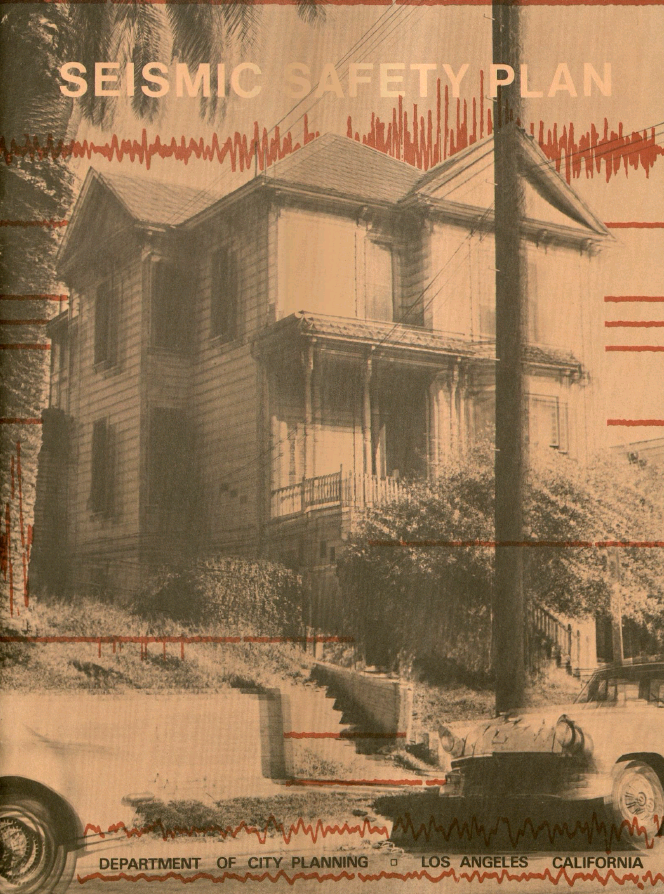
View Additional Pages (PDF)
LADWP Water Distribution
The 1971 San Fernando quake interrupted water service in numerous locations around Los Angeles. In Earthquake, the damage created by the failure of the water system was one of the major causes of destruction. After the first quake, concerned workers at the Mulholland Dam thoroughly investigated the dam's seismic damage to determine if the dam would fail and flood the city. The dam was a major focal point of the film as workers strove to prevent a secondary disaster from occurring.
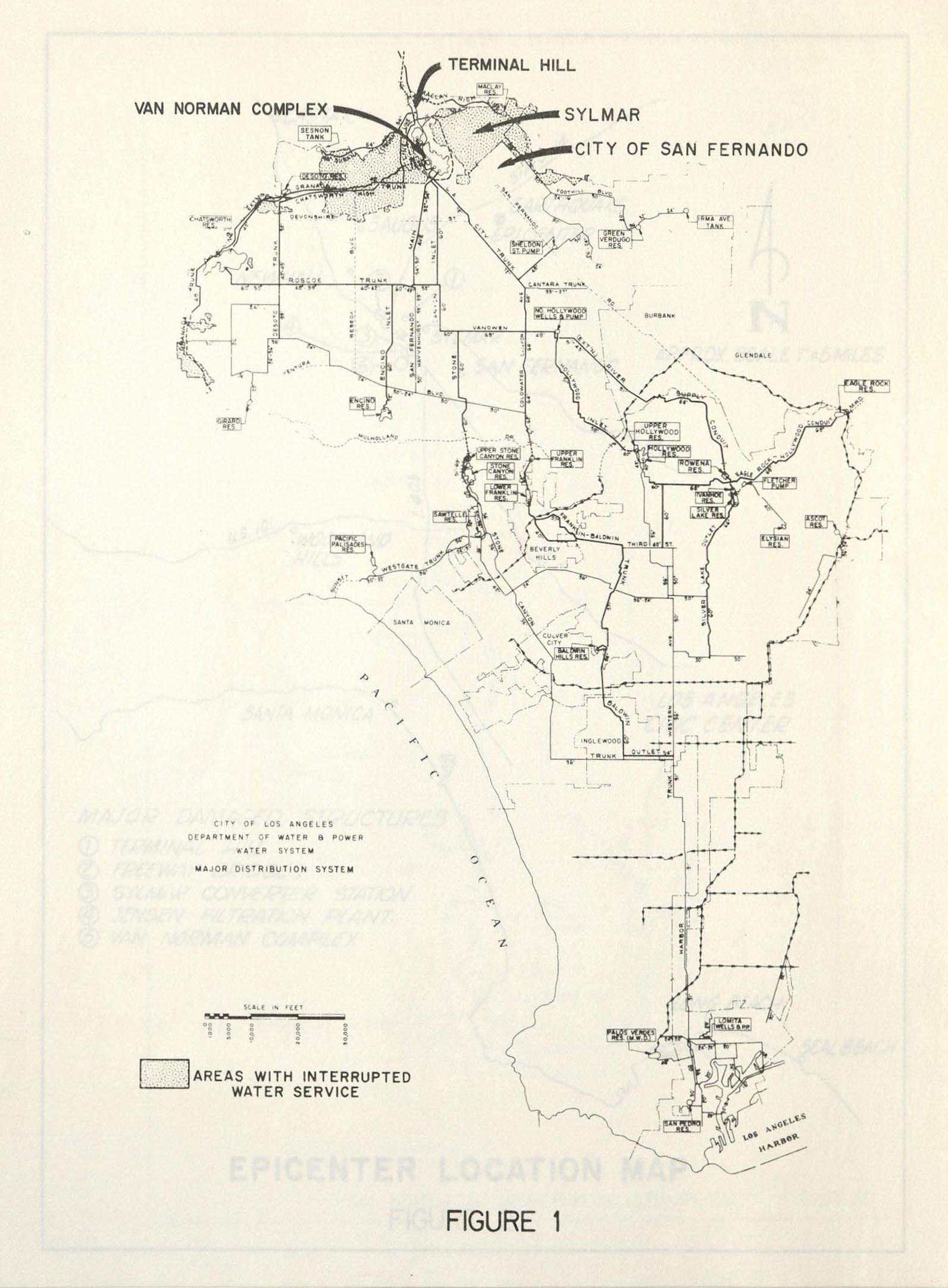
San Fernando Earthquake
These photographs of San Fernando after the 1971 earthquake show the destruction earthquakes can cause. The impact on local people, their living spaces, and infrastructure more broadly were significant, much like in Earthquake. The earthquake in the film toppled homes on hills and took down Mulholland Dam, bridges, and other structures. Though the film's earthquake scenes may seem overly dramatic, earthquakes have incredible destructive power.
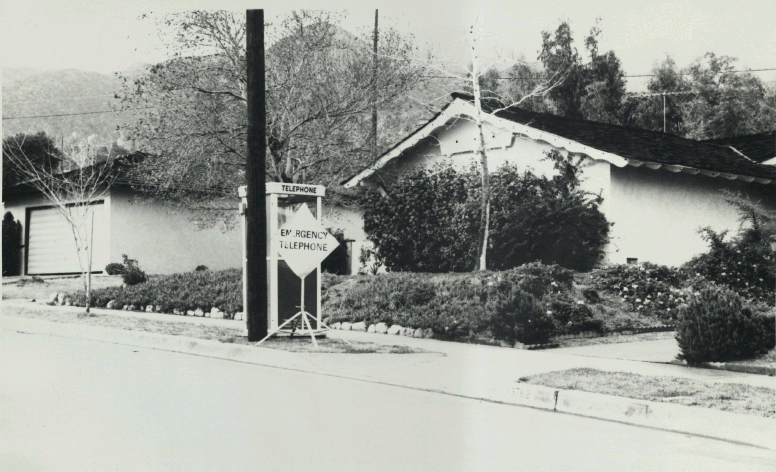
View Photographs (PDF)
Valley Girl (1983)
Valley Girl opens with titular character Julie and her girlfriends at the Galleria, racking up big charges on their credit cards without batting an eye. The young women come from a privileged background that prizes aesthetics. Despite her upbringing, the introduction of Valley outsider, Randy, peaks Julie's interest in life and Los Angeles outside her usual beach hangs, sushi snacks, and house parties. Randy is from Hollywood, on the other side of the hills, and shows Julie a side of Los Angeles outside of her bubble, a place he says is not "fresh and clean like a television show." Julie remarks back that she "always thought the Valley was real enough for me," but over the course of the film her perspective shifts as her knowledge of the city and world beyond the Valley grows.
Shopping Malls
The construction of shopping malls paralleled post-WWII suburban sprawl, increased automobile ownership, and an interest in building places for suburbanites to spend their disposable income. Although the protagonists in the film rack up big charges while shopping, malls were also seen as community centers where people could gather in a safe, communal space. In this communal commercial space the predictable stores and décor were ultimately a source of the oppressive homogeneity Julie feels in her privileged San Fernando Valley community.
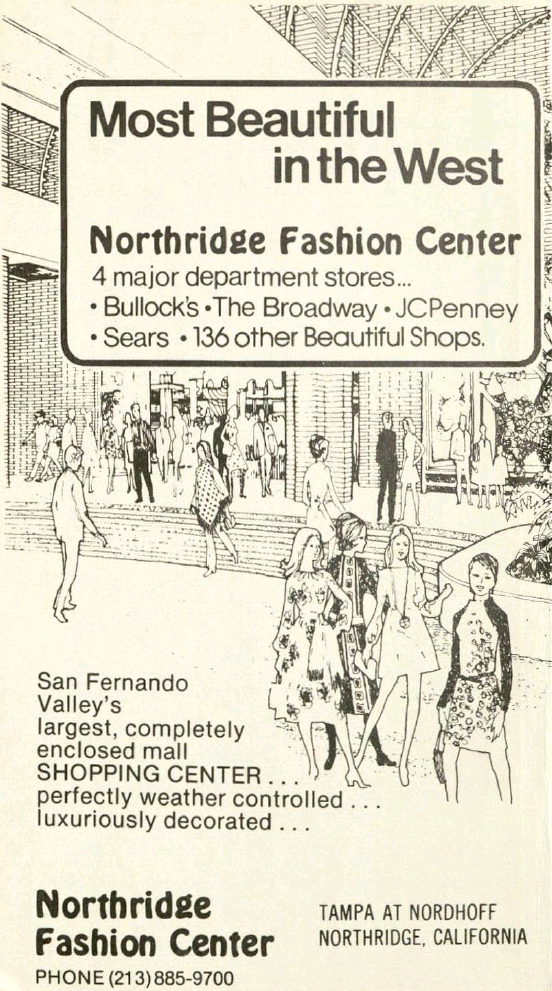
View Document (PDF)
Beauty Pageants
Julie's friends adopt similar speech patterns and mannerisms that fit the stereotype of the titular "Valley girl." This stereotype originated in the San Fernando Valley in the early 1980s, and denoted a spoiled, superficial girl primarily interested in her looks and the latest clothing styles. Despite this narrow view of a female teenager, the San Fernando Valley's population was becoming increasingly diverse during the 1980s. Beauty pageants traditionally privilege looks above other skills and knowledge, much like the Valley girl stereotype. The women pictured have popular hairstyles and wear trendy clothing, but also highlight increasing diversity in the Valley.
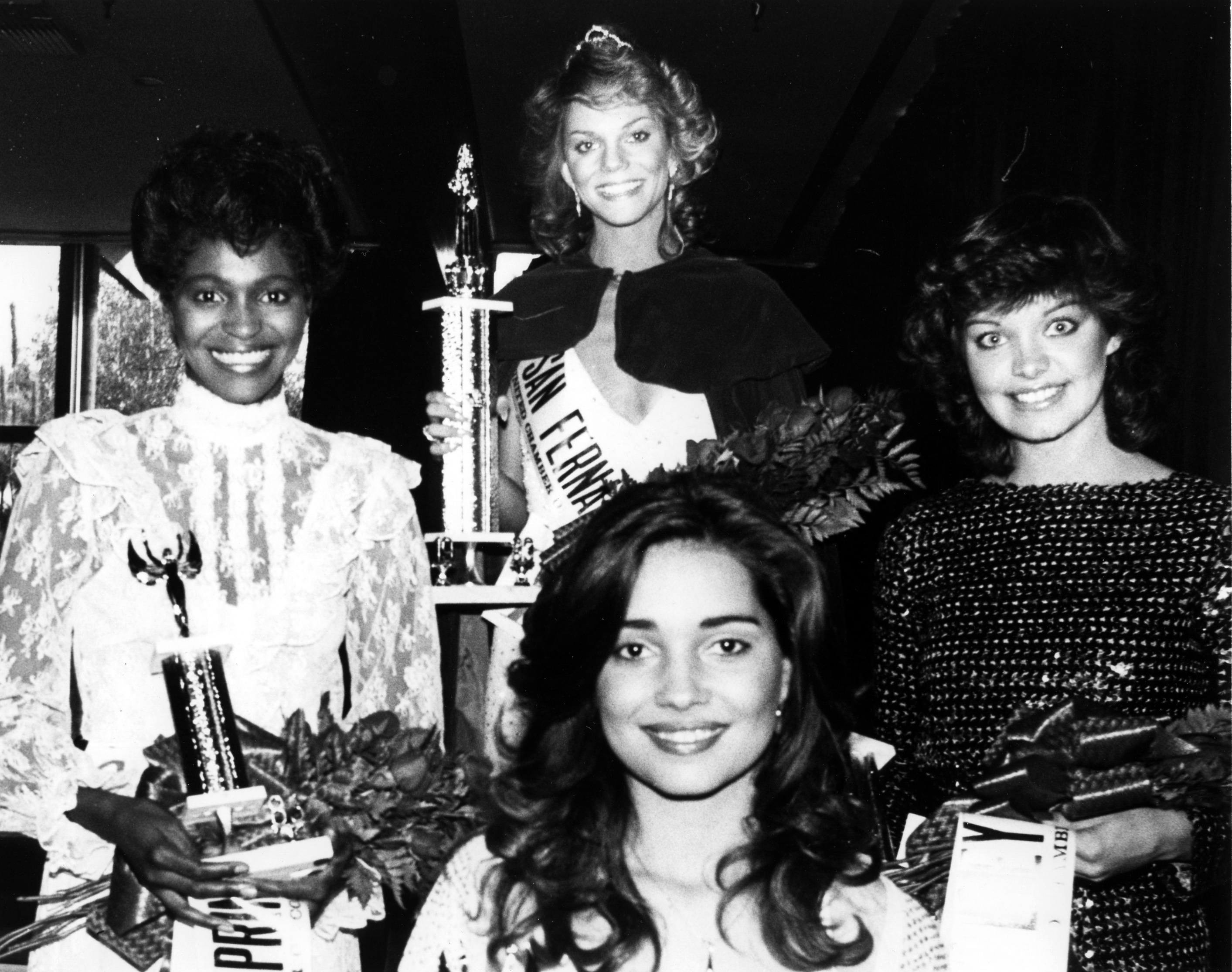
Hollywood Redevelopment
Hollywood is often portrayed on film as a place of glitz and glamour, but in Valley Girl, Hollywood is a dirty, almost foreign place across the hills. During the postwar period, the film industry gradually moved to neighborhoods on the Westside and in the Valley. By the 1980s, Hollywood-the-concept was still popular, but Hollywood-the-neighborhood was in decline. Hoping to revitalize it, the Hollywood Chamber of Commerce and other local business leaders sparked the Hollywood Redevelopment Project in 1984. Councilman Mike Woo's report noted that, "visitors still come from all over the world to experience the glamour of Hollywood. Unfortunately, many are disappointed by the reality of dilapidated buildings, street crime, empty storefronts and social problems which they find when they arrive."
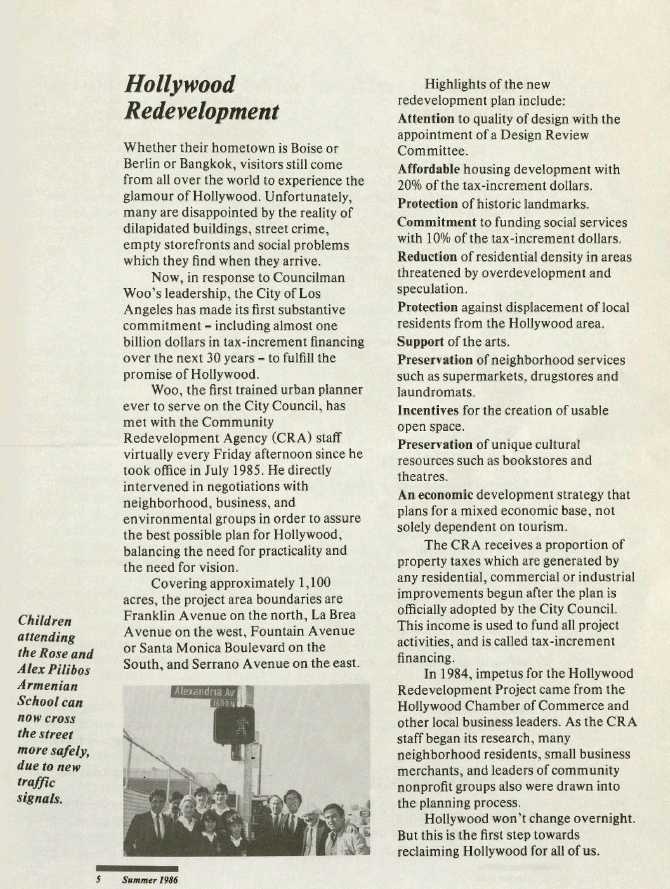
View Document (PDF)
Devil in a Blue Dress (1995)
Devil in a Blue Dress is a neo-noir detective movie written and directed by Carl Franklin, adapted from Walter Mosley’s novel of the same name. Set in 1948 Los Angeles, it features World War II Veteran Ezekiel "Easy" Rawlins. After being laid off by his employer, Easy needs money to pay his mortgage, so he accepts a job to locate a missing woman known to frequent clubs in the African-American community around Central Avenue. From the 1920s to the 1950s Central Avenue was the family-friendly "downtown" area of middle-class Los Angeles's African-American community. "The Avenue" was also the center of the west coast jazz scene, and as such was frequented by many high profile African Americans.
Lincoln Theater
The Lincoln Theater, designed by architect John Paxton Perrine and owned by businessman Adolph Ramish, was a space that welcomed patronage from Los Angeles' African-American community. It opened in 1927 and was a state of the art facility with all the opulence of other great movie palaces of the time. This photograph was taken circa 1961, shortly before the theater was sold to the Church of God in Christ. While the tenants have changed, the building has been a house of worship since that time. The Lincoln Theater was designated Los Angeles Historic-Cultural Monument Number 744 in 2003 and added to the National Register of Historic Places in 2009.
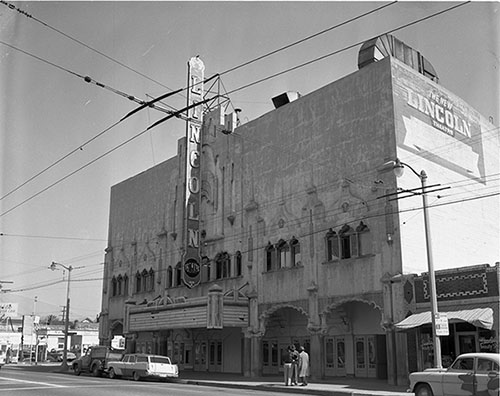
Lincoln Theater Marquee
The largest theater on Central Avenue, the Lincoln Theater was considered the "West Coast Apollo." The marquee in the bottom image is suggestive of the standing of the Lincoln Theater within the community by the variety of entertainment offered and the prominence of the names. The musicians pictured are likely Curtis Mosby’s Dixieland Blues Blowers, the house band at the Lincoln Theater. They recorded with Columbia and were featured in Hollywood films of the era. Mildred Washington was an actress, dancer, headliner, and the dance director at Sebastian’s Cotton Club on Washington and National in Culver City. At the Lincoln, middle-class African Americans were entertained in a luxurious movie palace.
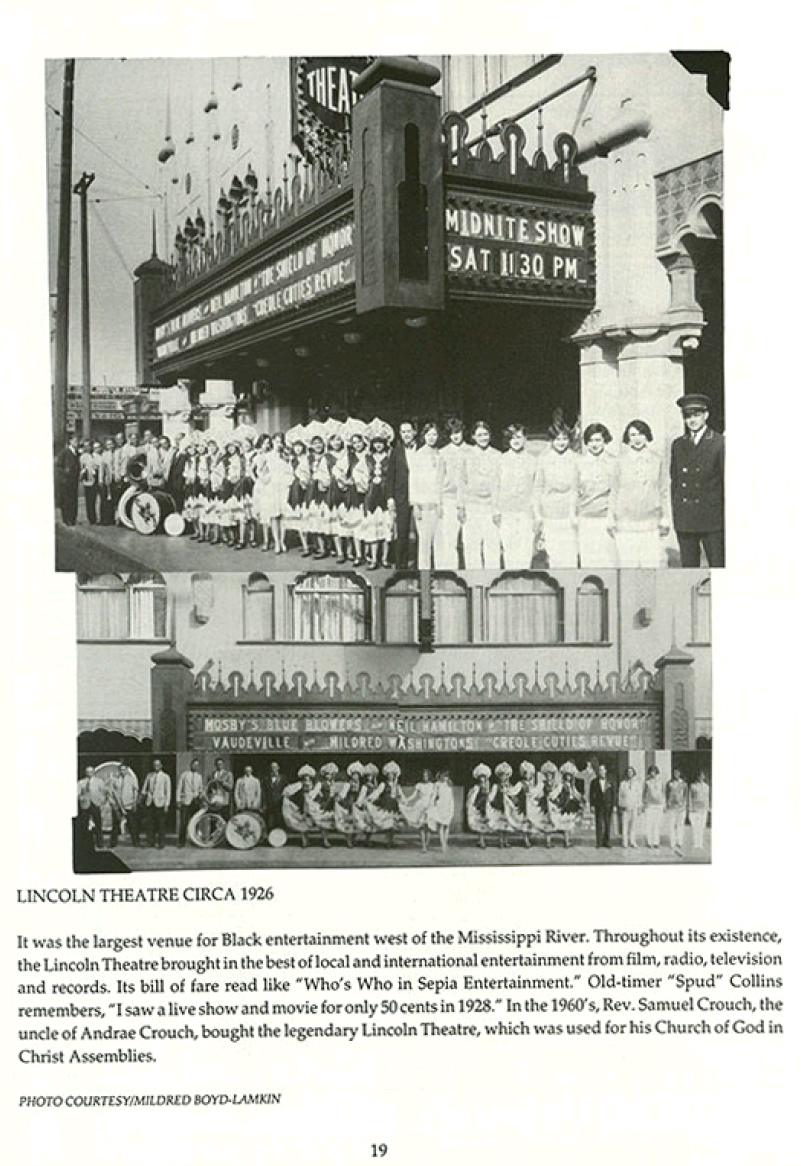
View Document (PDF)
Joe Louis and Jack Johnson
Prominent members of the African-American community could be found along Central Avenue, including iconic athletes Joe Louis and Jack Johnson as seen in this circa 1941 image. Johnson was boxing’s first African-American heavyweight champion, and Joe Louis was the then-current heavyweight champion. Johnson displayed unwavering confidence in himself while refusing to conform to social norms. Louis was considered an American hero, defeating German Max Schmelling in 1938 and enlisting in the Army shortly after the attack on Pearl Harbor. While in the Army, Louis used his influence to speed Jackie Robinson’s Officer Candidate School application. He was also the first Black man to play a tournament on the PGA Tour.
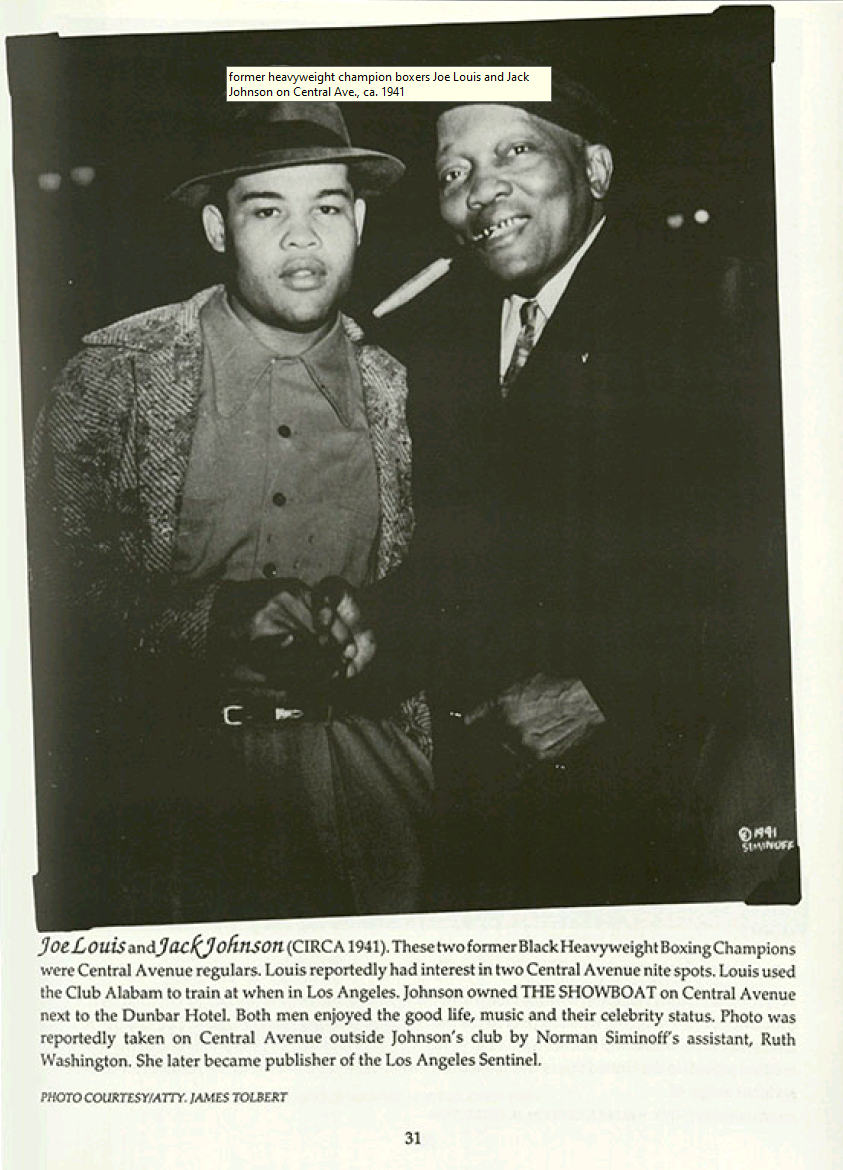
View Document (PDF)
Boogie Nights (1997)
Boogie Nights is a snapshot of a unique subculture in the San Fernando Valley, especially Reseda. Adult filmmaker Jack Horner discovers his next big star Eddie Adams bussing tables at a nightclub. Adams rebrands himself as Dirk Diggler, acts in several films, and becomes part of the Horner Films family. He and his friend Reed convince Jack to make a series of successful action-porn films. At the height of his career, Dirk starts using cocaine, and his carefree life begins a downward spiral until his eventual redemption. By the 1970s, the San Fernando Valley was the hub of the adult film industry. Although Boogie Nights is set in this era, the movie focuses primarily on the personal challenges the characters face, rather than the industry.
San Fernando Valley
This photograph shows an aerial view of the San Fernando Valley shortly after the events depicted in Boogie Nights. In the late 1970s, portions of the San Fernando Valley still felt very suburban, and neighborhoods were often distinct communities. The Valley had a reputation as a quiet, suburban area sprouted from farmland, but the incursion of the adult film industry added a twist to its otherwise family-friendly reputation. Although the Valley would at one point become the source for "90 percent of all legally distributed pornographic films," the impact of the industry on the aesthetics of the Valley was discreet. The pornographic industry was largely hidden in industrial complexes in Van Nuys, Chatsworth, and Canoga Park.
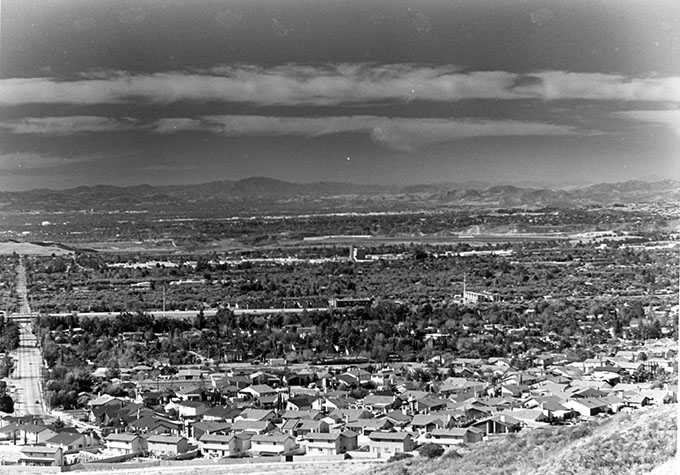
Reseda Blvd and Sherman Way
The intersection of Reseda Boulevard and Sherman Way is in the neighborhood where Boogie Nights was filmed. The nightclub scenes were shot at the Reseda Theater located on Sherman Way just east of Reseda Blvd. Today the venue is the Spanish-language Christian church, Restauración Reseda. The donut shop featured in the film is located steps from the theater-turned-church.
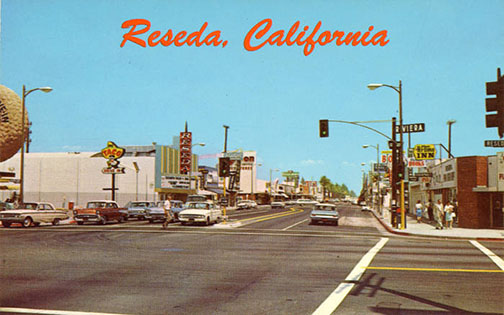
Adult Video News
The Adult Film Awards featured in Boogie Nights are likely a nod to the Erotic Film Awards presented by the Adult Film Association of America in Los Angeles from 1977-1986. Presently the most coveted adult video awards are the AVN Awards presented at the AVN Adult Entertainment Expo held annually in Las Vegas, Nevada. This centerfold from AVN shows the winners from the AVN Awards of 2002. The first AVN Awards were held in 1984, shortly after the events depicted in Boogie Nights.
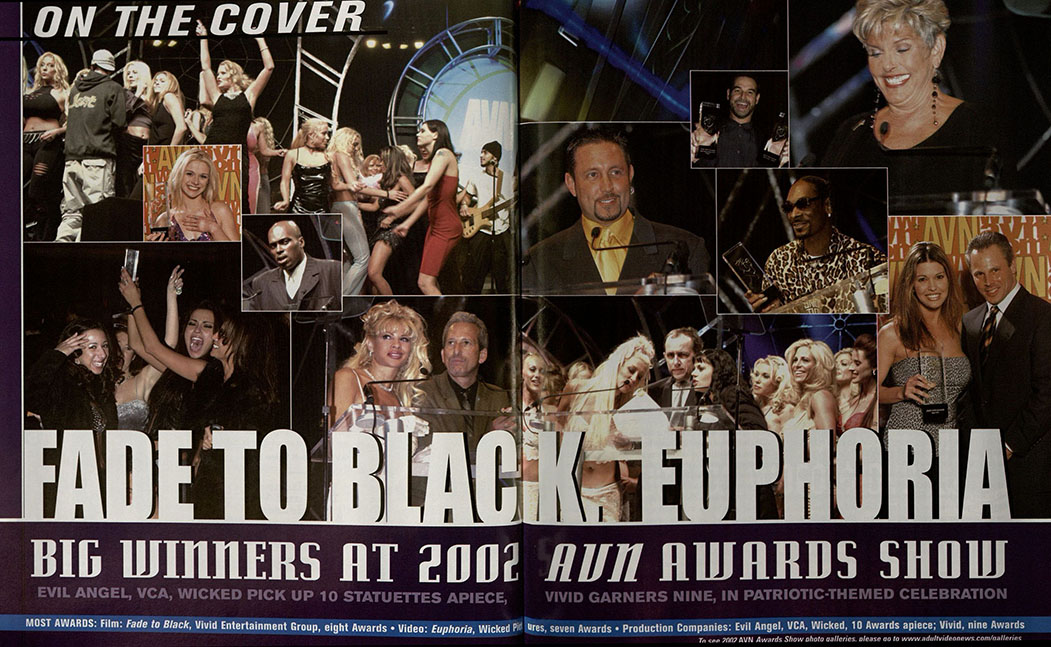
View Accessible Text Transcription (PDF)
Tangerine (2015)
The transgender red-light district in West Hollywood is the geographic center of the film Tangerine. It follows transgender prostitute Sin-Dee Rella following her release from serving 28 days in prison on a possession charge for her boyfriend/pimp, Chester. While sitting at Donut Time, her best friend Alexandra lets slip that Chester has been cheating on her with cis-gender prostitute Dinah. Sin-Dee treks around town on a mission to find Dinah and confront Chester. Much of the film’s conflict and resolution occur at area landmark Donut Time formerly at the corner of Santa Monica Boulevard and Highland Avenue. The shop was, for many years, a safe indoor space where prostitutes could gather while keeping an eye on all the corners.
West Hollywood LGBT
This press release from non-profit Christopher Street West states that an estimated 35% of West Hollywood’s residents were members of the gay & lesbian community in 1990, and credits the community with playing a critical role in its 1985 incorporation. The release also suggests that West Hollywood was a safer space for members of the gay & lesbian community, as it was "in the nation’s vanguard in ensuring the rights and liberties and addressing the needs of gays & lesbians." Although the document specifically references "Gay & Lesbian," in 1990 only queer community activists used the initialism LGBT. The Human Rights Campaign rated over 500 American cities based on municipal inclusivity, legal protections, and law enforcement, including reporting of hate crimes to the FBI. In the 2016 index, West Hollywood was one of 60 cities that scored a perfect 100 and continues to provide a relatively safe space for the queer community when compared to other American cities.
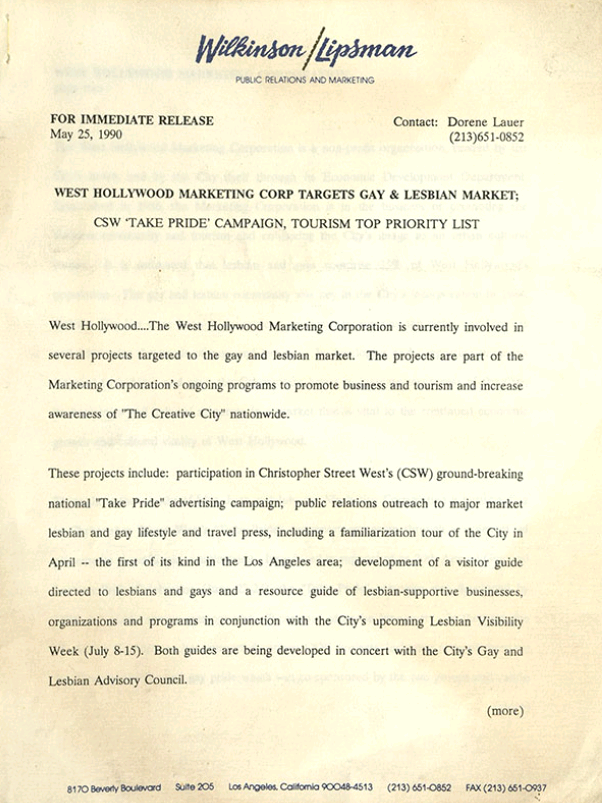
View Full Document (PDF)
Transgender Media Coverage
The Greater Los Angeles Society of Professional Journalists, along with several co-sponsors from area journalists’ associations, partnered with the Los Angeles Gay & Lesbian Center to organize a panel that discussed transgender media coverage in 2011. The panel was advertised as a discussion of what local reporters should know about the transgender community, including tips and story ideas. Events such as these often resulted in attempts to humanize the transgender community by giving them a public voice. These efforts continue to assist in creating safe(r) spaces for the transgender community and to garner at minimum a tacit acceptance.
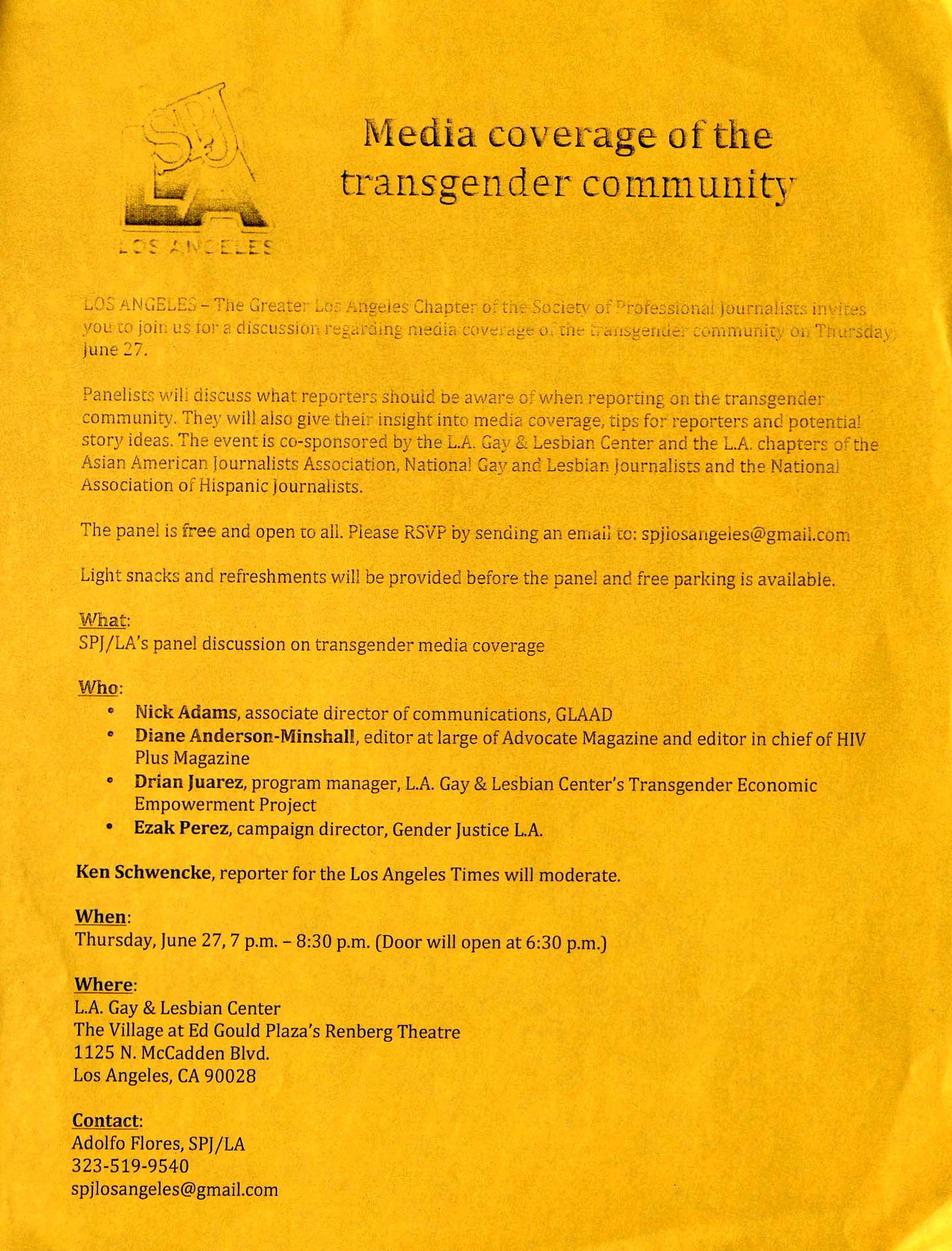
View Accessbile Text Transcription (PDF)
Transgender Resource Guide
The City of West Hollywood regularly produces a Transgender Resource Guide that shares information not only on health, education, and legal services but also on community, shelter, and employment resources. In Tangerine, Sin-Dee travels the city apparently without fear, which is a mark of her daily reality and fearlessness as well as, to a lesser extent, the city’s attempts to create an inclusive and safe(r) space for the transgender community. Unfortunately, no place is completely safe, and Sin-Dee is the victim of a nonviolent attack near the end of the film. Character Ashken remarks in Tangerine that "Los Angeles is a beautifully wrapped lie."
